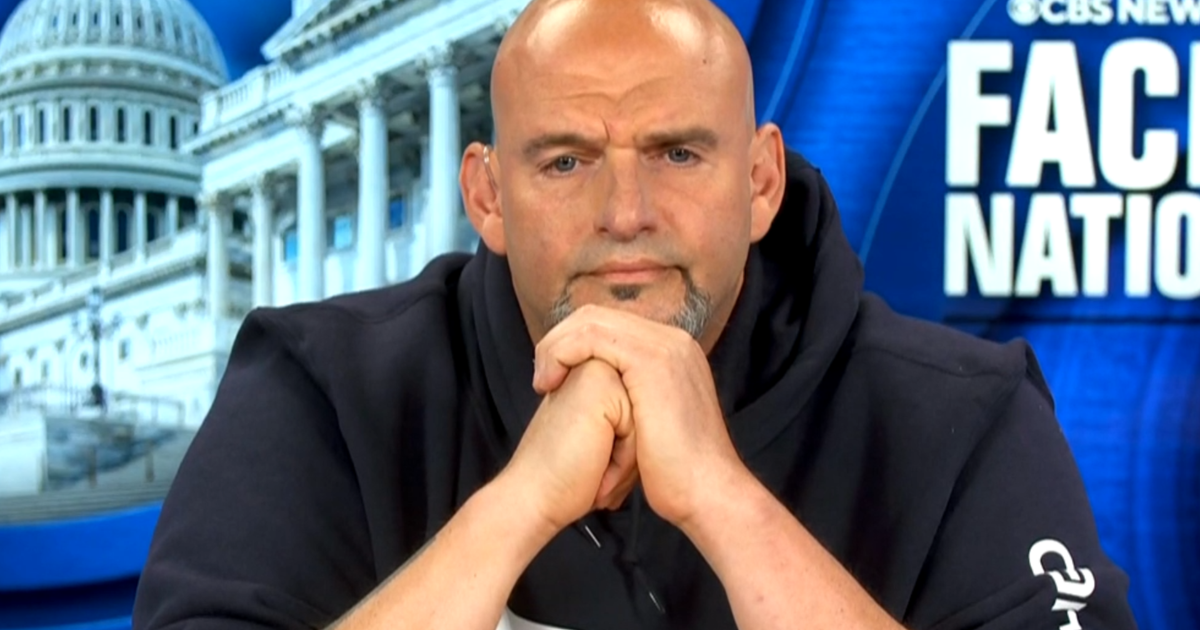Transcript: Rochelle Walensky discusses coronavirus on "Face the Nation," February 14, 2021
The following is a transcript of an interview with CDC Director Dr. Rochelle Walensky that aired February 14, 2021, on "Face the Nation."
MARGARET BRENNAN: Welcome back to FACE THE NATION. We turn now to the Director of the Centers for Disease Control, Dr. Rochelle Walensky. She joins us from Boston this morning. Good morning to you.
CDC DIRECTOR ROCHELLE WALENSKY: Good morning. Thanks for having me.
MARGARET BRENNAN: You heard the British Prime Minister give himself a little bit of wiggle room there on committing to reopening schools in his country next month, particularly given this new research on B.1.1.7, that highly contagious strain that now is found to have higher hospitalization and death risk associated with it. Should areas of this country where there is B.1.1.7 still have in-person classes?
DR. WALENSKY: Yeah, thanks for that question. So, there are over 1,000 B.1.1.7 cases that we have documented in this country in over 30- in 39 states. We know now that- or we estimate now that about 4% of disease in this country is related to B.1.1.7. And we have projections that it may be the dominant strain by the end of March. That said, the amount of disease in school is very much related to the amount of disease that's in the community. So the work that we do to decrease the amount of disease in our community is- is that much more benefit to getting our schools reopened.
MARGARET BRENNAN: But you said on Friday at a press conference that 90% of the country's schools are in areas with high levels of transmission. Don't those schools risk becoming vectors of transmission?
DR. WALENSKY: So what we know from the- from the literature- from the scientific literature, is that most disease transmission does not happen in the walls of the school. It comes in from the community. There's very limited transmission between students, between students and staff, really, mostly between staff to staff when there are breaches in mask wearing. So what we're really advocating for now is working to get our- in- especially in the- in the high areas of transmission, the red zones you just talked about, getting our K-5 kids back in a hybrid mode with universal mask wearing and six feet of distancing.
MARGARET BRENNAN: So those protocols still apply with these new variants in places like South Florida or California, where there is a high degree of these mutant strains?
DR. WALENSKY: Indeed, you know, it is the same disease. We- we prevent it in the same ways. Our mitigation strategies work, whether it's a B.1.1.7 variant versus a wild type variant. The B.1.1.7 variant may be less forgiving when we have breaches in these mitigation strategies, but the mitigation strategies are indeed the same.
MARGARET BRENNAN: The CDC data that we looked at from last year shows that the proportion of mental health related visits for children has increased nearly 24% over the year prior. But mental health isn't mentioned in those guidelines that you released this week. And I'm wondering, is there another health crisis here that the CDC is yet to deal with?
DR. WALENSKY: We are absolutely worried about all of the collateral damage that we are going to see, not just mental health, of course, mental health, but not just mental health. Loss of educational milestones, food insecurity that has happened with our schools being closed, which is why we were really prescriptive with this guidance to- to provide states and localities with the information that they need so that they can open safely. It's really a road map to really try and get those schools back open.
MARGARET BRENNAN: But on the mental health portion of it, are you going to issue new guidelines on how to deal with that?
DR. WALENSKY: Well, we will- we will be certainly watching that space and- and we'll be looking to our mental health colleagues and- and looking to where and when guidelines are required- necessary.
MARGARET BRENNAN: When you were last with us, it was just right before the inauguration. And at that time, you predicted the country would be at close to half a million deaths by mid-February. That's almost exactly where we are right now. What do you think the trajectory is from this point?
DR. WALENSKY: You know, I think so much depends on how we as a country behave. We still have 100,000 cases a day. We still have somewhere between 1,500 and 3,500 deaths per day. And yet we see some communities relaxing some of their mitigation strategies. We are nowhere out of the woods. And as you know, if we relax these mitigation strategies with increasing transmissible variants out there, we could be in a much more difficult spot. So what I would say is now is the time to not let up our guard. Now is the time to double down, still with 100,000 cases a day, still with over two and a half times the cases we had over the summer.
MARGARET BRENNAN: So you're talking about places like Montana and Iowa where they have lifted masking requirements. You say that's a mistake?
DR. WALENSKY: Indeed. Indeed, I- I think we're not out of the woods yet. We need to get our kids back to school. We need to get our communities back to some normal functioning before we can start thinking about letting up our mitigation strategies.
MARGARET BRENNAN: I want to ask what you've changed since you've taken the job at the CDC, because when you were with us last, you talked about the need to scale-up surveillance and sequencing to basically figure out where these new variants are and to do it quickly. So what have you done? I mean, how do you get ahead of the mutations? Where are we? What have you improved in the weeks you've been in office?
DR. WALENSKY: I think that there's a lot of change that's happened at the CDC, I'd invite my colleagues there to- to comment as well. What I will tell you is, first of all, we've released the school guidance, which has been long in coming. We've really wanted to get that out, and now we have done so. In terms of the variant specifically, we have much more sequencing happening. We have collaborated with departments of public health. Each state is now giving us strains for- for sequencing. We get over 750 of those per week. We have collaborated with- with commercial labs with the intent of sequencing over 6,000 var- viruses per week, as well as collaborations with universities, with the intent of really, really scaling up our sequencing so we can have a really good sense of how many variants are out there and where they're located.
MARGARET BRENNAN: But how much are we actually getting a glimpse of right now? Where are we? 5%? 10%?
DR. WALENSKY: We are- in the beginning of- of January, early January, we were sequencing about 250 a week. We're now over 4,000 a week with the intent- and we're doing more and more every week.
MARGARET BRENNAN: So it sounds like you think there's still work to do to figure out where a virus is spreading in this country.
DR. WALENSKY: Absolutely. We have the intent to do more and more sequences every week. We need resources in order to do so. But- but the scale up has been over tenfold just in the three weeks we've been there.
MARGARET BRENNAN: When do you think the pharmaceutical companies that have developed the vaccine we have now need to switch over production to deal with these new variants?
DR. WALENSKY: What we know now is the- the major variant that's circulating here in the United States is B.1.1.7. That's the one that came from the U.K. We know in- in the lab that the current vaccines actually work quite well against B.1.1.7. That's according to laboratory data. We don't have any data here yet to demonstrate otherwise, although we're watching it extraordinarily carefully. In the meantime, the pharmaceutical companies are adjusting their manufacturing, their- their science to- to directly neutralize the B.1.1.7 variant. And so we are both watching what's happening on the epidemiology with those who have been vaccinated. But we're not waiting for that. We're doing the science to scale up different vaccines in case we either need bivalent vaccines, that is a vaccine that has two different strains, or booster vaccines. Both are happening.
MARGARET BRENNAN: Both are happening. Doctor, thank you for your time.
DR. WALENSKY: Thanks so much.
MARGARET BRENNAN: We'll be right back.



